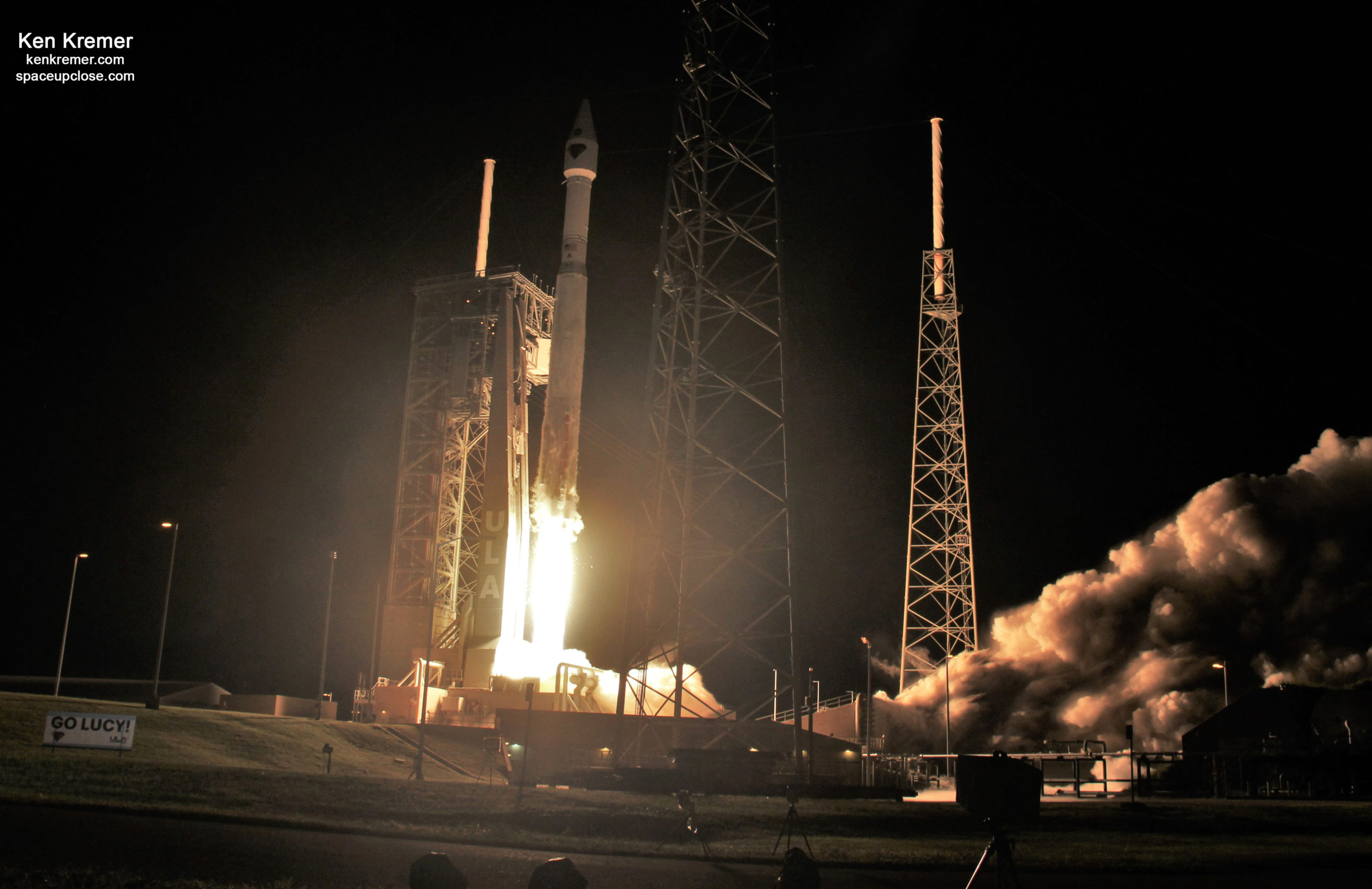
For SpaceUpClose.com & RocketSTEM
KENNEDY SPACE CENTER/CAPE CANAVERAL SPACE FORCE STATION, FL – Following a successful and flawless launch on Oct. 16, 2021 on a ULA Atlas V rocket, initial analysis of NASA’s Lucy asteroid explorer on a mission to investigate Jupiter’s heretofore unexplored Trojans showed the spacecraft was healthy, stable and systems operating well following separation from the upper stage – until an issue was discovered with the deployment of one of two solar arrays on the probe.
Although both Lucy solar arrays were deployed only one of the UltraFlex solar arrays is fully latched. Engineers immediately began an investigation into all the engineering data to determine just how far the second array – on the left side- was actually deployed, while the spacecraft was otherwise functioning normally with nearly full power as it continues on its interplanetary trajectory to the Trojans.
“After successful separation from the rocket on Oct. 16, NASA’s Lucy spacecraft deployed both solar arrays. Soon after deployment, NASA received confirmation that one of the solar arrays was fully deployed and latched. Analysis currently shows the second solar array is partially unfurled,” NASA officials said in an Oct 19 update.
“The team continues to look at all available engineering data to establish how far it is deployed. That solar array is generating nearly the expected power when compared to the fully deployed wing. This power level is enough to keep the spacecraft healthy and functioning.”
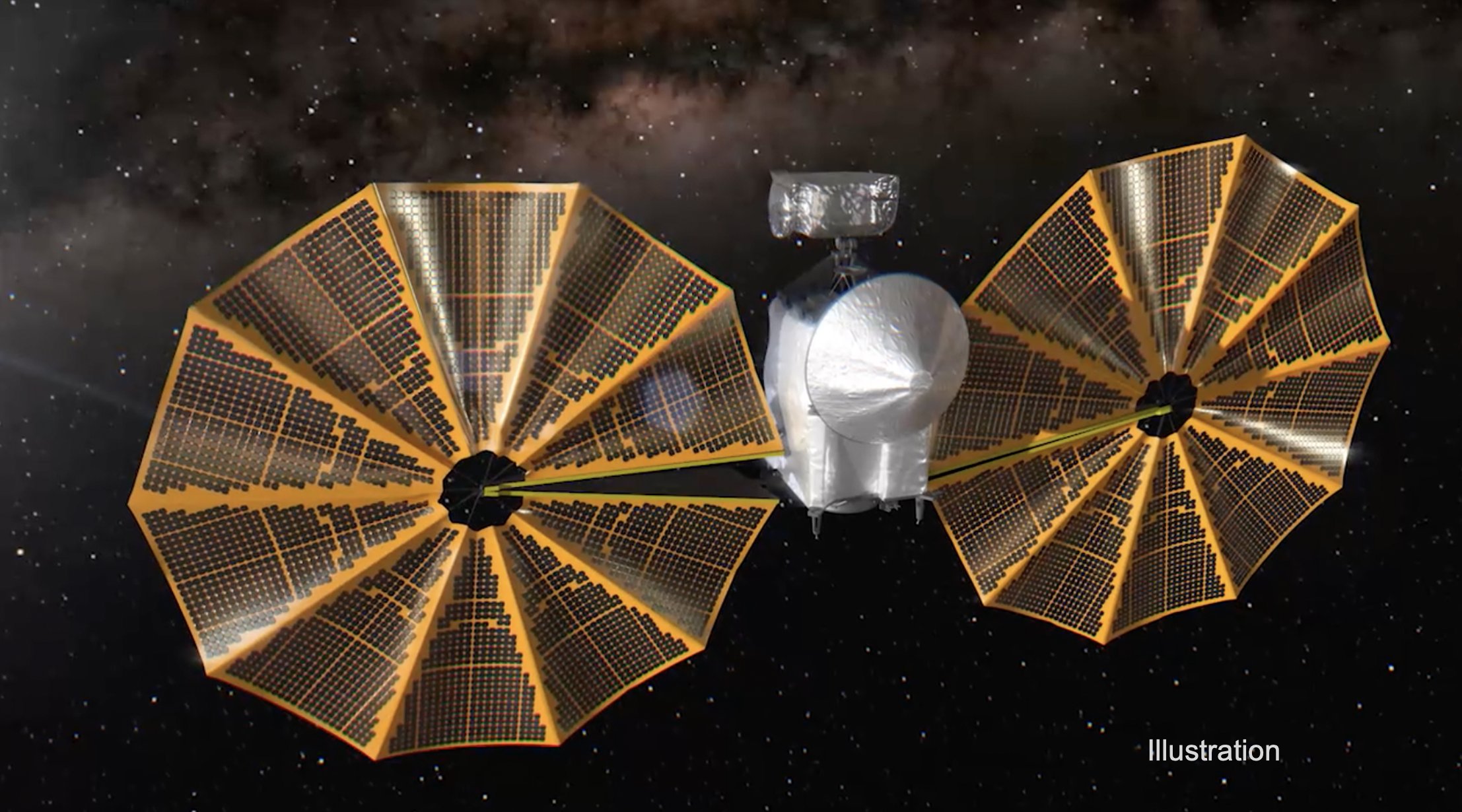
At that time the team decided to keep Lucy in safe mode and postpone deployment of the instrument pointing platform – on which the 3 science instruments are mounted – in order to focus on resolving the solar array deployment issue.
The $981 million Lucy craft blasted off right on time at the opening of the launch window at 5:34 a.m. EDT (0934 GMT) on Saturday, Oct. 16, 2021, just before sunrise on a ULA Atlas V rocket from Space Launch Complex 41 at Cape Canaveral Space Force Station in Florida.
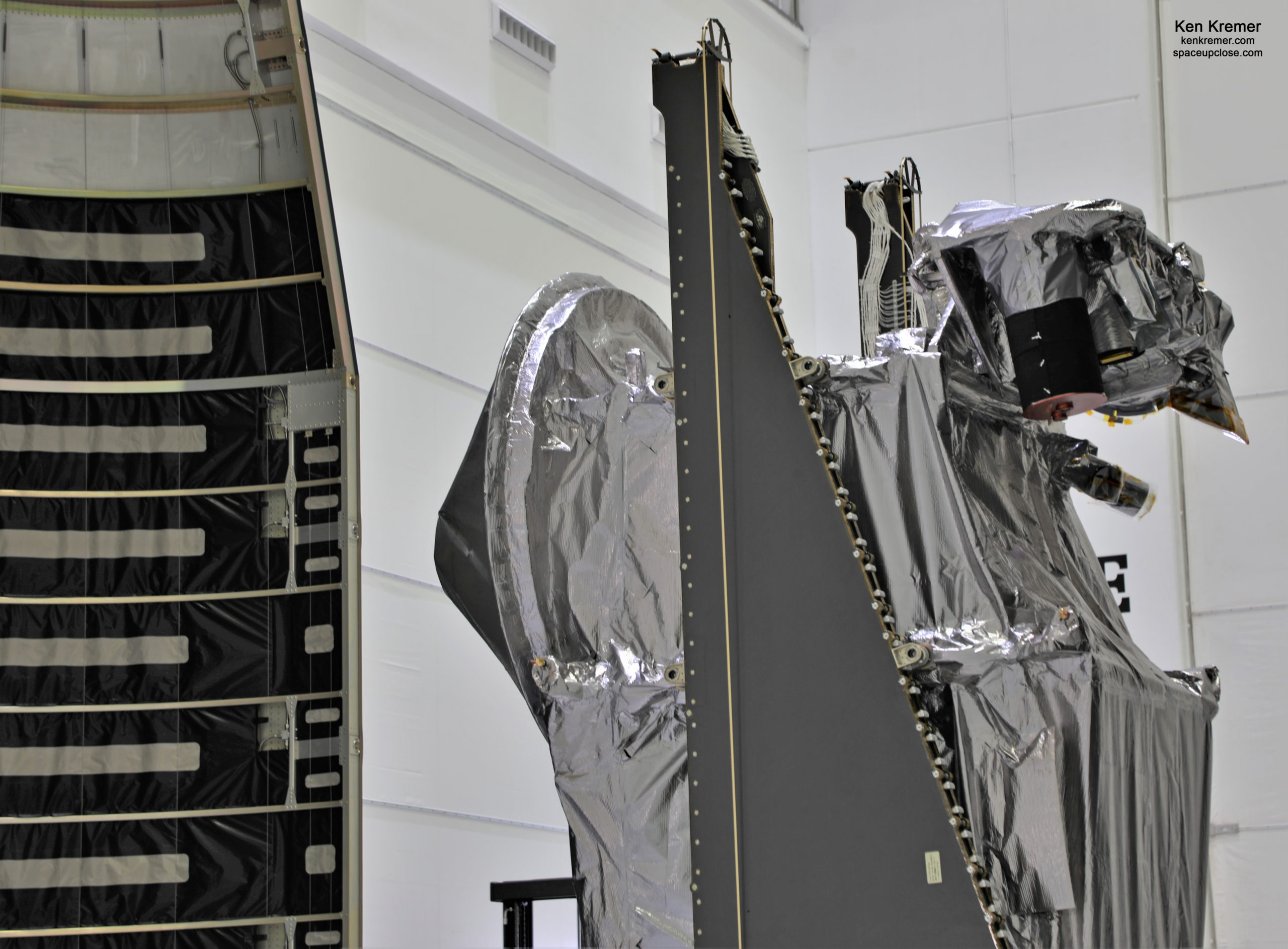
In a new update issued on Oct. 22 NASA said Lucy “remains stable, power positive, with all other subsystems working, with the exception of one solar array.”
Furthermore Lucy transitioned to cruise mode on Oct. 20 – the standard configuration for flight.
It was also commanded to deploy the instrument pointing platform.
“Both events were normal and raised no concerns.”
Meanwhile the Lucy team is still working to understand how far the second unlatched array has deployed.
“NASA is reviewing spacecraft data, including using techniques to measure how much electric current is produced by the array during various spacecraft positions and attitudes. This will allow the team to understand how close the array is to the latched position. These techniques are well within the capabilities of the system and pose no risk.”
All plans for redeployment of the second array are on hold until the latest assessments are completed in order to provide the team with a safe path forward.
Post launch NASA reported that Lucy deployed its two cymbal shaped solar arrays – each nearly 24 feet (7.3 meters) wide –during a 20-minute procedure that started about 30 minutes later after separation from the Centaur.
Lucy was healthy “and began charging the spacecraft’s batteries to power its subsystems” NASA reported.
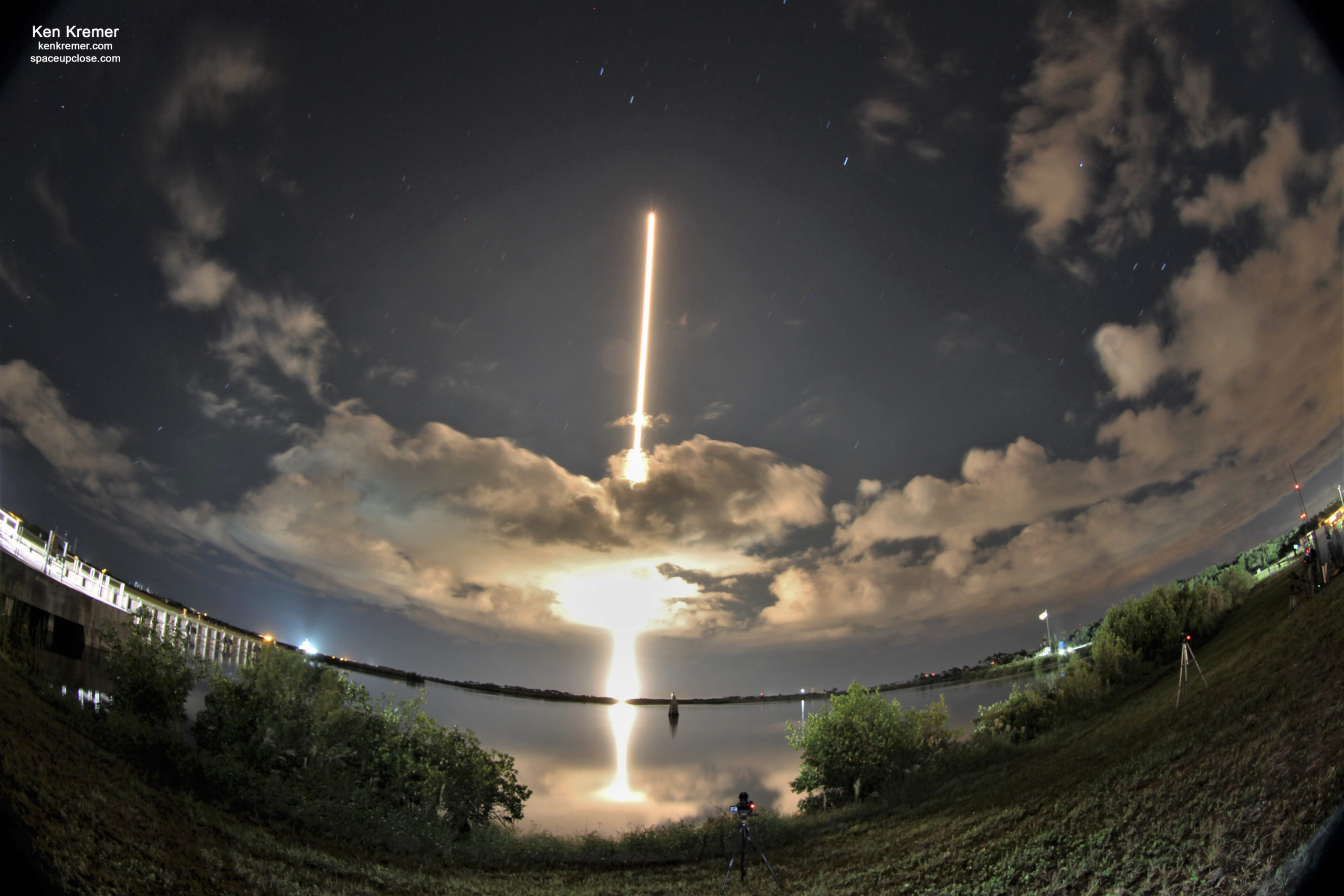
NASA officials are optimistic the array issue can be overcome.
“The spacecraft is stable and healthy, and it’s safe,” said Lori Glaze, director of NASA’s planetary science division, on Oct. 18 at a virtual town hall meeting by NASA’s science mission directorate. “It’s not in any danger, at this point, in this configuration. So we are taking our time in determining what’s going on with the solar array, and developing a path forward on how to remediate.”
“We’re very happy to report that we are getting most of the power we expected at this point in the mission,” said Joan Salute, associate director for flight programs at NASA’s planetary science division. “It’s not 100%, but it is fairly close. So that is great news.”
At Jupiter’s orbit Lucy will be the most distant solar powered spacecraft ever operated – at a distance of some 530 million miles (853 million kilometers) from the sun, almost six times farther than Earth’s orbit.
Lucy was built by Lockheed Martin and the solar arrays were provided by Northrop Grumman.
The arrays will provide about 500 watts of power – sufficient to operate the three science instruments and the spacecraft at that enormous distance from the sun.
No near term thruster firing are planned because the ULA ATLAS V delivered Lucy very precisely to its target position.
The Trajectory Correction Maneuver (TCM-1) has therefore been cancelled and TCM-2 is not scheduled to occur until mid-December.
Hopefully by that time the array issue is resolved.
Almost 1 week since launch and almost 2 million miles from Earth! The launch perfectly placed Lucy where it needed to be, no trajectory correction needed!
Check out this nice overview of the #LucyMission by @colkin and Simone Marchi https://t.co/0a7HPKGKrT pic.twitter.com/AVbKCd040F
— Lucy Mission (@LucyMission) October 22, 2021
“The ULA Atlas V rocket delivered Lucy precisely to the target point at separation, and so a backup maneuver called the Trajectory Correction Maneuver (TCM-1) is unnecessary and has therefore been canceled. The first maneuver will now be what’s known as TCM-2, currently scheduled for mid-December.”
“The project is evaluating whether there are any long-term implications to other scheduled activities.”
The left solar panel appears to have not fully deployed, but as the spacecraft is safe, stable, and power-positive there is no rush as team members work to understand the situation.
The the current status can be found at : https://t.co/BQxnCKqm0y
— Lucy Mission (@LucyMission) October 22, 2021
“Another Atlas bullseye…” tweeted ULA CEO Tory Bruno.
Another #Atlas bullseye… #LucyMission pic.twitter.com/Qym1xJqSdK
— Tory Bruno (@torybruno) October 22, 2021
NASA’s lovely Lucy asteroid expedition spacecraft launched from Florida’s Space Coast on a historic 1st ever trek to traverse and explore Jupiter’s pristine Trojan asteroids
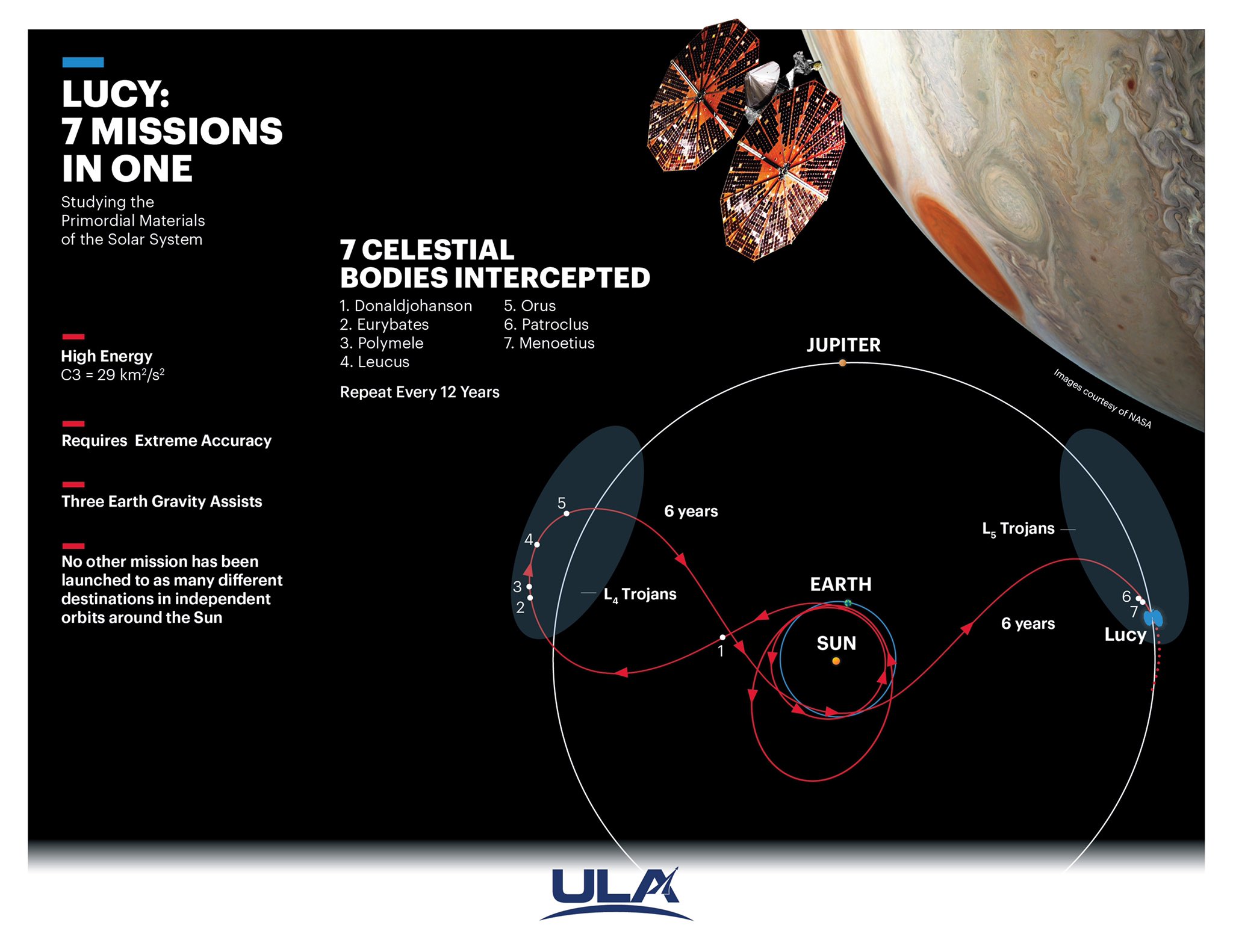
Lucy thus begins a 12 year long, 4 Billion mile (6.4 billion km) revolutionary quest of exploration and discovery on a once-in-a-lifetime trajectory while encountering seven different unexplored Trojan asteroids as well as one main belt asteroid along the interplanetary way.
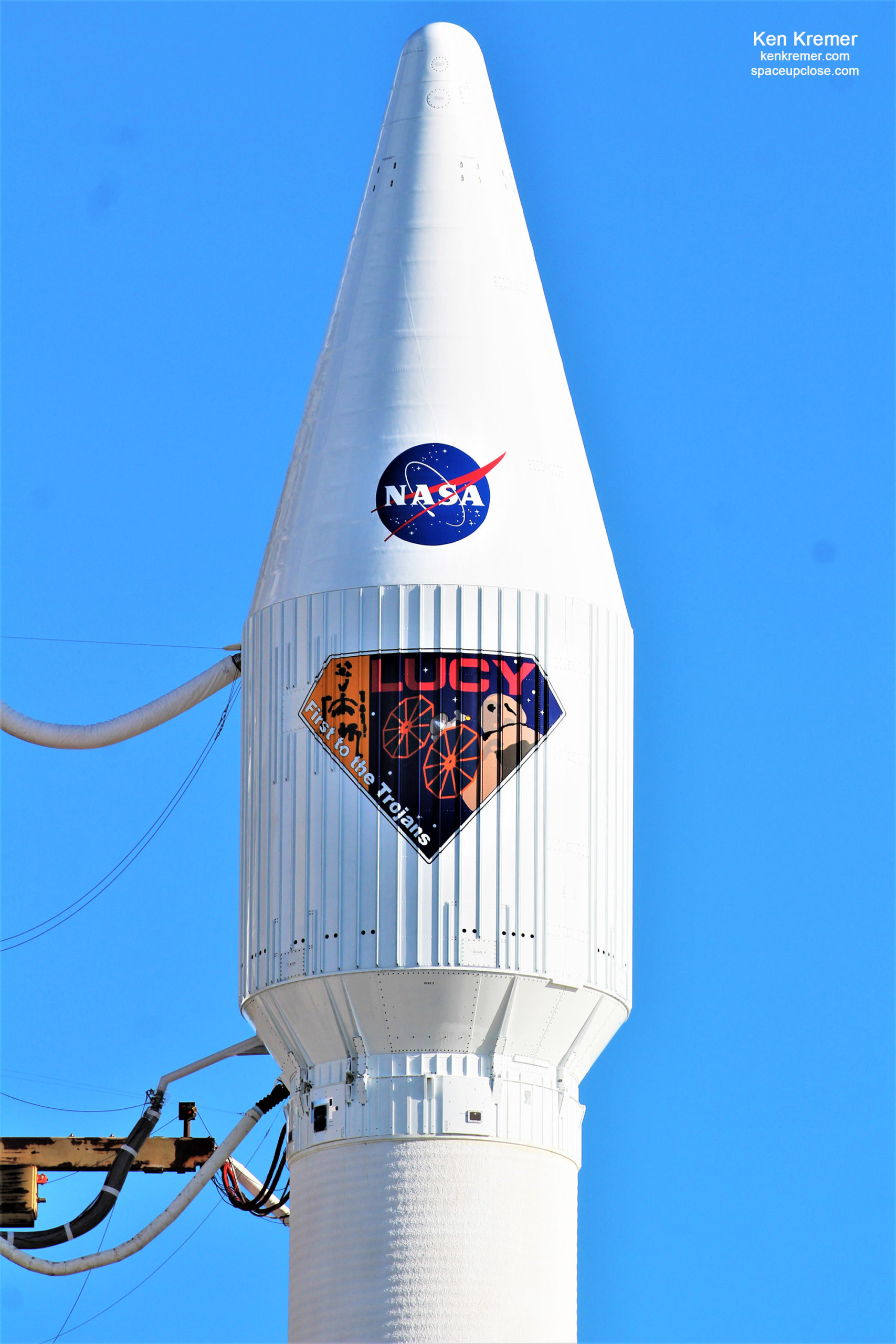
Lucy is a Discovery class mission led by principal investigator Harold “Hal” Levison from the Southwest Research Institute in Boulder, Colorado.
Lockheed Martin Space in Littleton, Colorado, is prime contractor for the Lucy mission and built the spacecraft.
Southwest Institute (SwRI) in Boulder, Colorado is the principal investigator institution for the Lucy Mission and will lead the science investigation. NASA’s Goddard Space Flight Center, Greenbelt, Maryland will provide overall mission management, systems engineering, and safety and mission assurance. Lockheed Martin Space Systems in Denver, Colorado built the spacecraft.
My photos of Lucy in the clean room have been featured on WFTV ABC 9 Orlando in multiple broadcasts leading up to launch
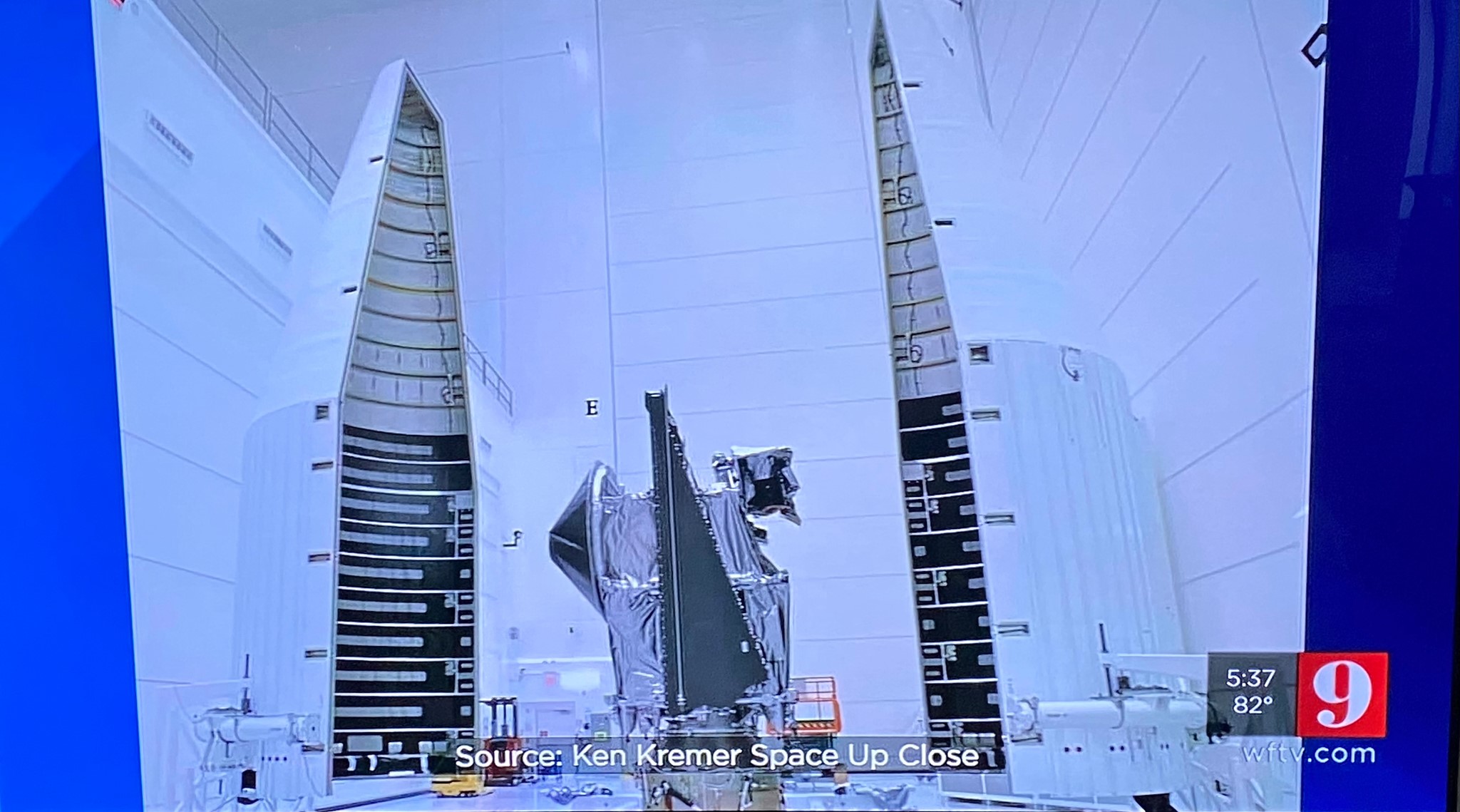
My rollout and cleanroom photos have been featured on WKMG CBS 6 Orlando in multiple broadcasts leading up to launch.
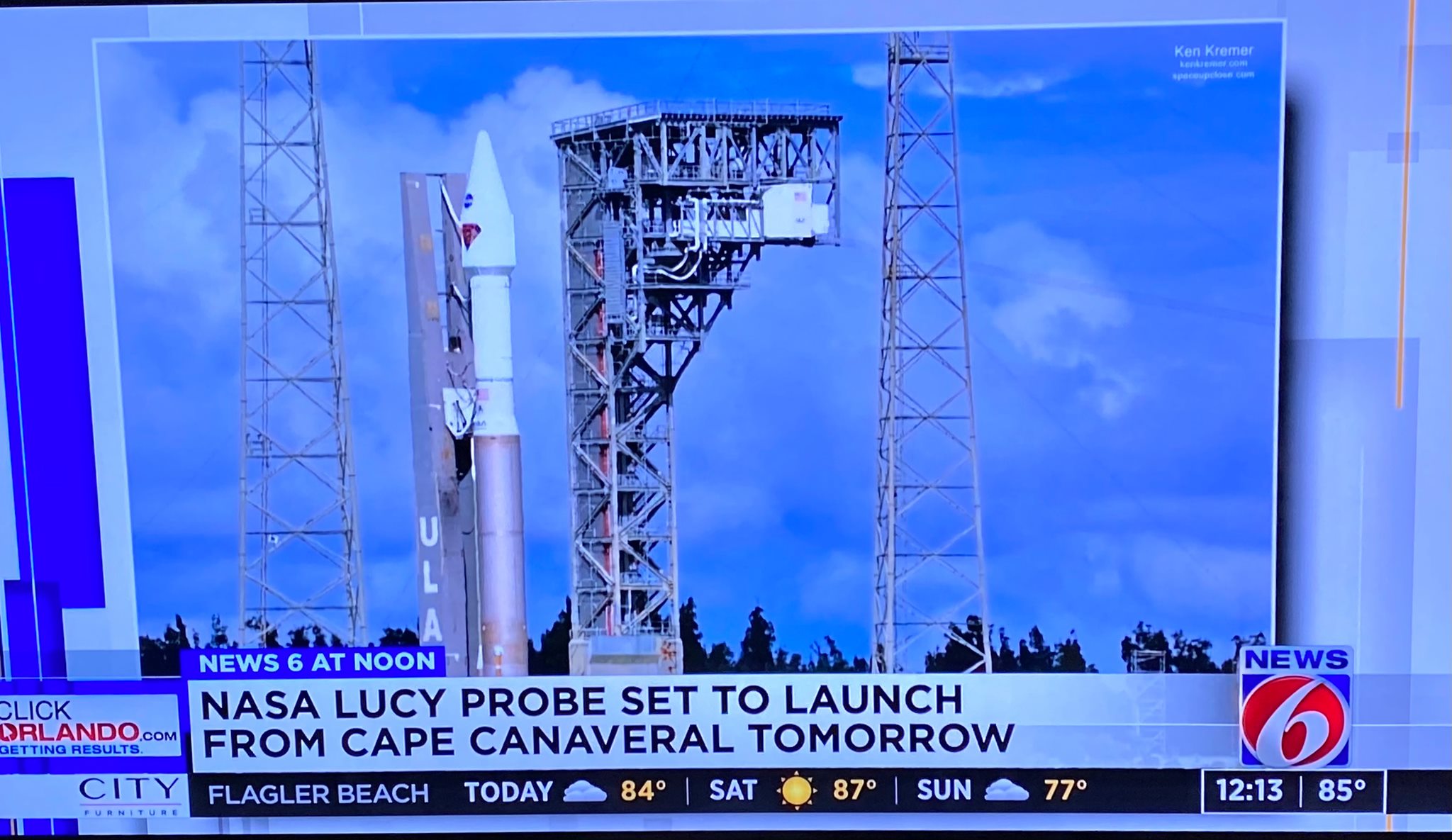
You can watch my new prelaunch interview presentation about the Lucy mission on the Oct. 6 edition of the ‘Stay Curious’ space show from the American Space Museum, Titusville, Florida – including many of my cleanroom photos – see video below.
https://www.facebook.com/SpaceWalkOfFame/videos/686060975688731
Ken is onsite at NASA’s Kennedy Space Center for live reporting about the Lucy mission
Watch Ken’s continuing reports about Lucy Asteroid mission, Blue Origin and Space Tourism, SpaceX Cargo and Crew Dragons, Artemis and NASA missions, SLS, Orion, SpaceX Starlink, Commercial Crew and Starliner and Crew Dragon and onsite for live reporting of upcoming and recent SpaceX and ULA launches including Crew 1 & 2 & 3, ISS, Solar Orbiter, Mars 2020 Perseverance and Curiosity rovers, NRO spysats and national security missions and more at the Kennedy Space Center and Cape Canaveral Space Force Station.
Stay tuned here for Ken’s continuing Earth and Planetary science and human spaceflight news: www.kenkremer.com –www.spaceupclose.com – twitter @ken_kremer – email: ken at kenkremer.com
Dr. Kremer is a research scientist and journalist based in the KSC area, active in outreach and interviewed regularly on TV and radio about space topics.
………….
Ken’s photos are for sale and he is available for lectures and outreach events
Please consider supporting Ken’s work by purchasing his photos and/or donating at Patreon:
https://www.patreon.com/kenkremer
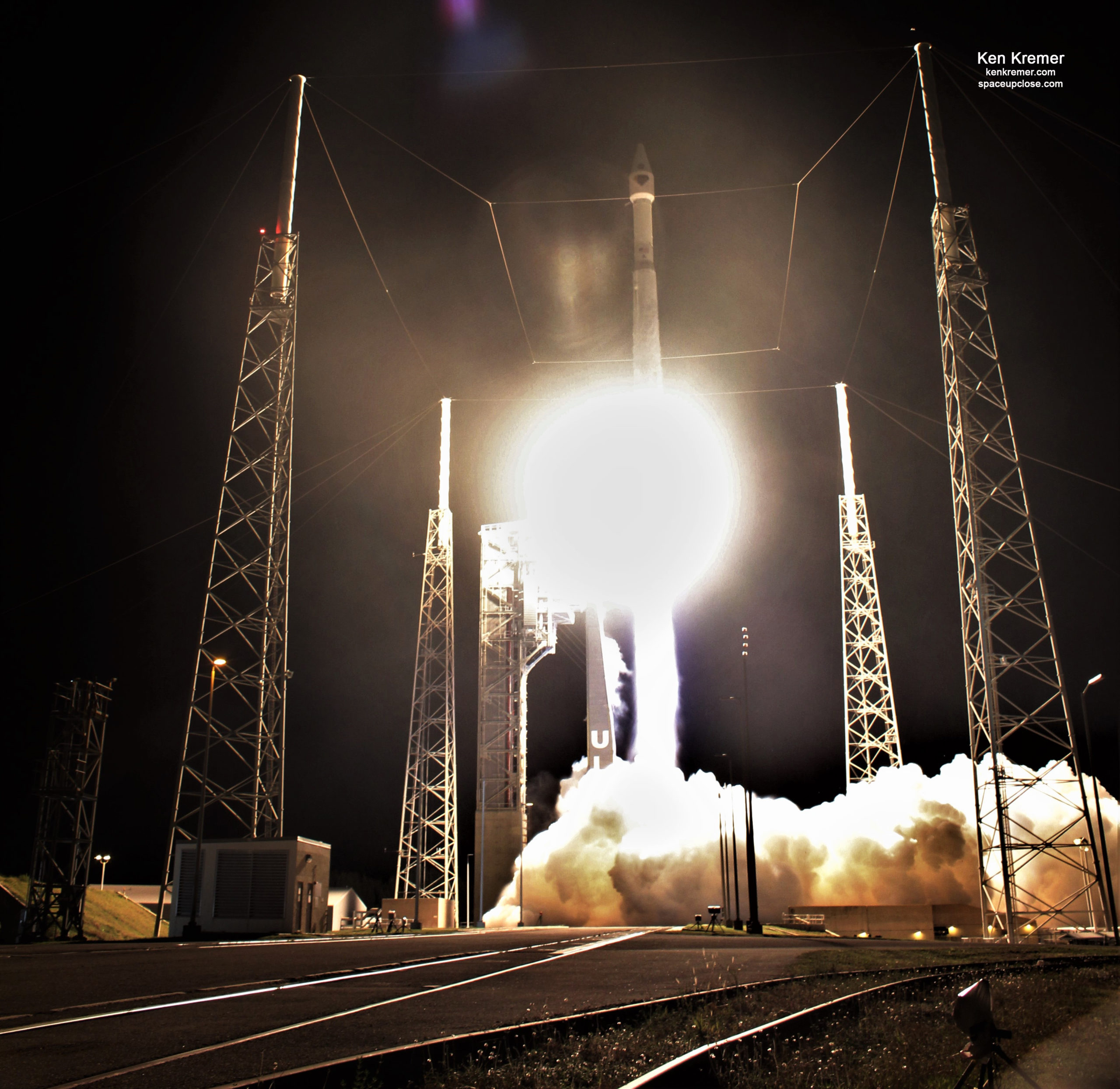
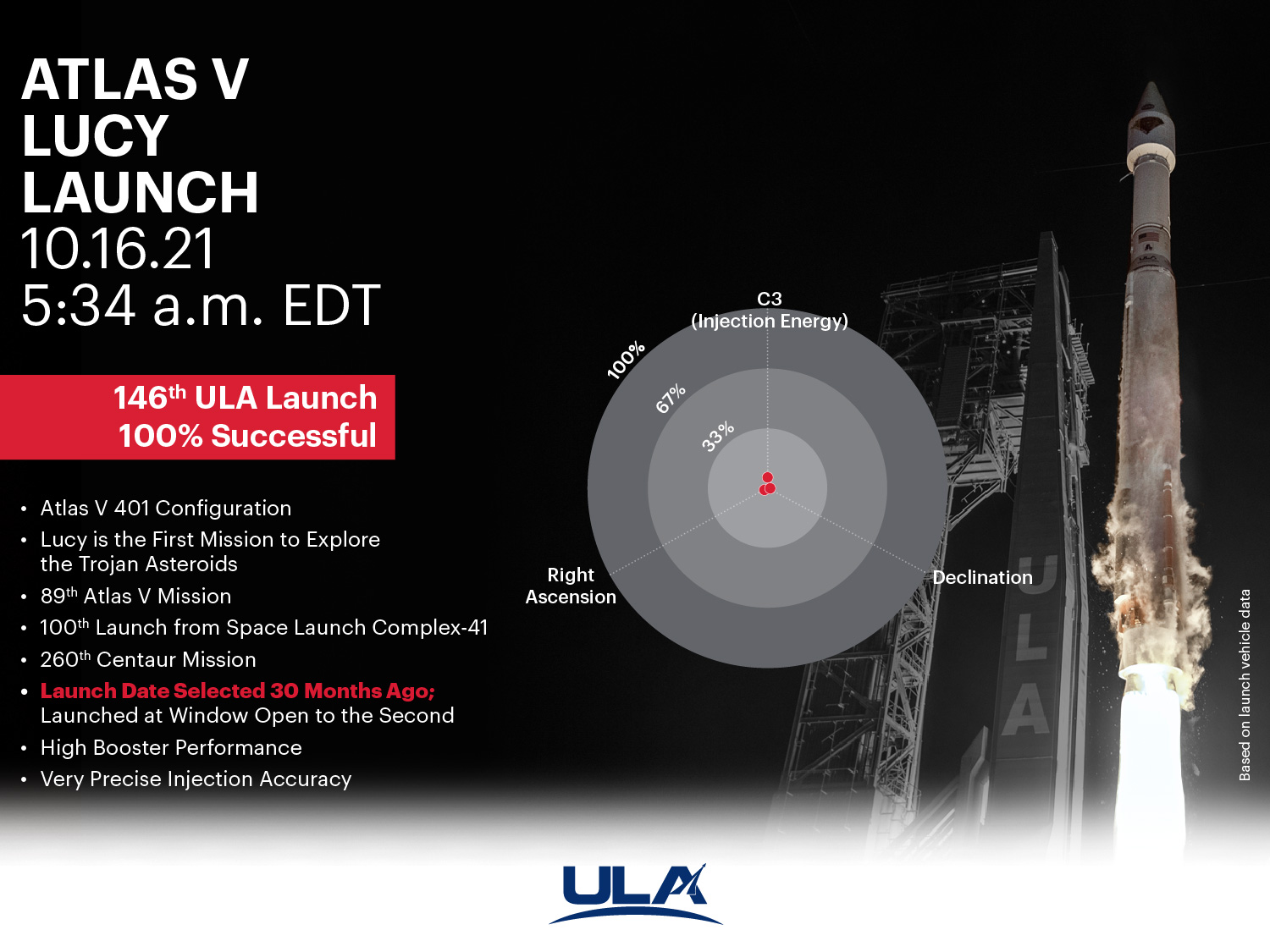
x



